Nu pierdeți cele mai bune locuri de muncă!
Abonează-te și săptămânal iți vom trimite un email cu ultimele locuri de muncă disponibile. Introdu adresa ta de email mai jos
You’re in Medellín for a while. Before you settle in your hostel or apartment, or throw yourself head first into a new job, or begin your studies at the Universidad de Medellín, get to know your nook of the city and its surrounding neighborhoods. Here’s how.
December through mid-January, Medellín is illuminated by Christmas displays. Highlights of the free tour include Christmas lights along Medellín River and La Playa Avenue and a technologically innovative video-mapping show on the brick façade of the Metropolitan Cathedral (Catedral Metropolitana). (Watch the video mapping from 2013 here.) The show introduces a central storyline that continues on the walking tour via backlit signs and thematically organized lights. This year’s themes are happiness, faith, and peace, the latter theme of note because of Colombia’s ongoing peace talks with FARC, a guerrilla organization. Empresas Públicas de Medellín (EPM), the city’s electricity and utilities company, pays millions of dollars to transport, install, and illuminate the lights each year.
Plaza of Lights (Plaza de la Luz / Parque de las Luces)
Not around for the holidays? The light show continues the rest of the year in this contemporary public space containing 300 columns, each 18 meters tall and lit from within, stretching to the sky and replicating the phases of the moon. While the lights are best viewed at night, water fountains and bamboo forests make this an enjoyable public space during the day as well. During the time of Pablo Escabar’s control of the city, the plaza was a dangerous space. The white illuminated pillars are now thought to bring light to what was once one of the darkest parts of the city.
Metrocables
This aerial mass transit system, complementing the existing metro and autobus lines, is part of the city’s innovative public transportation system. Dubbed “the cheapest sightseeing tour in the world” by Lonely Planet, the L Line of Medellín’s gondola lift system provides tourists a remarkable view on their way to a remarkable public park. (More on Arví Park below.) More importantly, the cables, which run across two other lines (the J and K lines), were installed to enhance the quality of life for citizens living in the city’s less developed neighborhoods, sometimes on steep hills where busses do not run. The metrocables were inspired by Venezuela’s Caracas Aerial Tramway / Mount Avila Gondola, which carries visitors to, among other attractions, the ruins of the Humboldt Hotel, a luxury hotel that never opened.
Arví Park (Parque Arví)
With 54 miles of trails for hiking and cycling, acres of nature preserves, and tours of a 1,500 to 2,000-year-old pre-Hispanic archeological site including antique buildings and a stone road called “Camino Cieza de León,” Arví Park is one of Medellín’s biggest attractions. After exiting the metrocable, park authorities provide information and maps, and bicycles are available for some intra-park transit and are free to use so long as users provide identification. While many visitors come here for the expansive views, the smaller parts of the park should not go ignored. When local blogger David Lee visited, he saw the world’s smallest orchid and learned that the number of species of butterflies in Arví Park outnumbers species of birds 72 to 69. He also visited a nearby vegetarian restaurant for lunch and got “a glass of the warm ginger and passion fruit tea for just 2,000 pesos.” Read more about his experience here. Recommendation: maximize your day by arriving early and leaving for the final metrocable home before the afternoon rush, as the line for return tickets can sometimes take up to thirty minutes.
San Javier Open Air Escalators
Funded by the city’s public transportation system and unveiled in 2012, this 385-meter outdoor escalator system transports people to what has historically been one of the city’s poorest mountainside areas, Community 13 (Comuna Trece). The logic for the six covered escalators is similar to the logic for the public metrocables: a city characterized by topography sometimes too vertical for cars can help its citizens by automating portions of their daily trek. This article details the impact of the project known as Senderos de Conexión Independencias I (Pathways to Independence) and tells the stories of nearby residents, including a 52-year-old delivery man who used to climb 357 stairs to deliver bottles of gas each day. “I don’t earn a peso more than before,” he says in the article, “but our quality of life has improved so much.” By one report, the old thirty-five minute trek now takes six minutes.
Library Parks (Parque Bibliotecas)
Designed by architects such as Giancarlo Mazzanti, Ricardo La Rotta Caballero, and Hiroshi Naito, Medellín’s ten parque bibliotecas combine public library and public park facilities. That is, citizens read newspapers and periodicals and enjoy the weather of what has been called “the city of eternal spring” in the same visit. Designed to host face-to-face interaction, outdoor recreation, community events, and quiet study in some of the city’s less developed neighborhoods, library parks aim to strengthen Medellín’s culture. Of note: the unique design of Mazaanti’s Spain Library Park (Parque Biblioteca España) resembles three black stone meteorites fallen from space and glows at night. Each of the three stone buildings serves a different purpose: library, auditorium, and training.
Location: The Spain Library can be reached by taking the K Line metrocable, exiting at the Santo Domingo stop. Other bibliotecas are located around the city.
Sign in to publish a comment
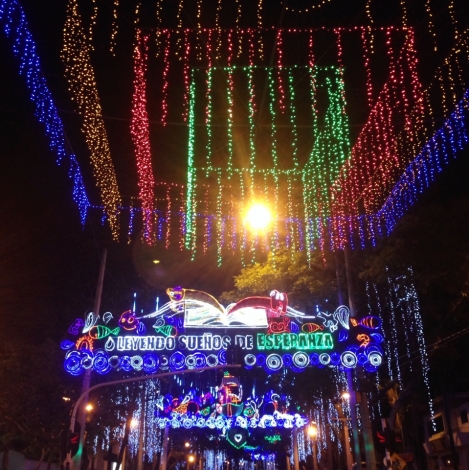
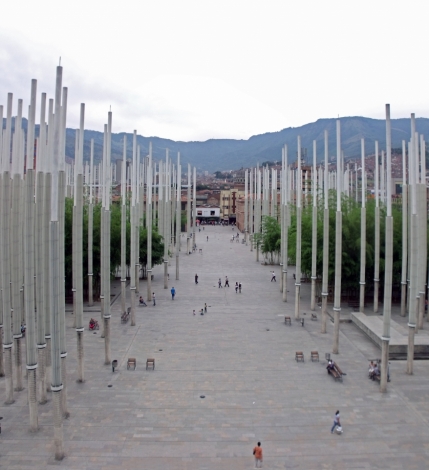
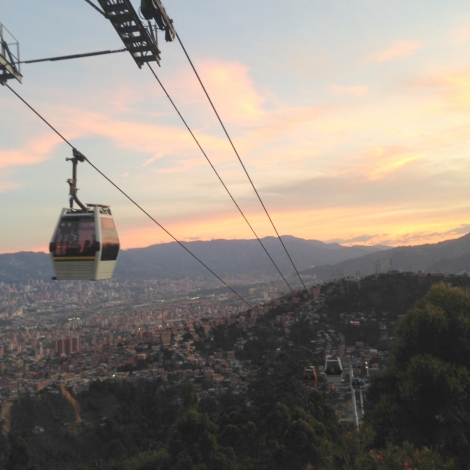
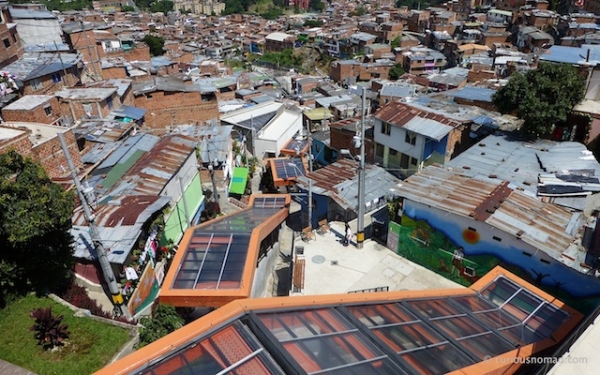
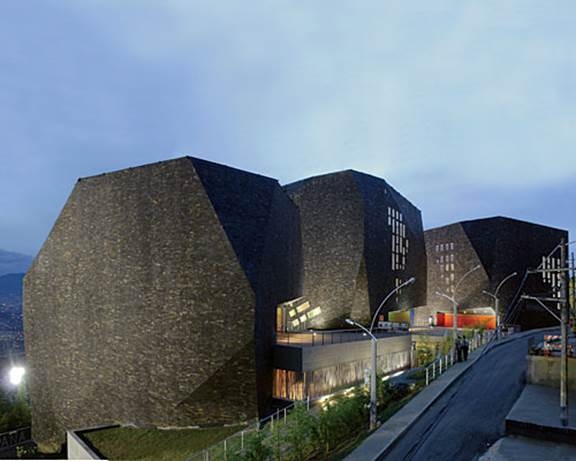
Be the first to comment on this post.